Interview: Joseph Bennett, Production Designer
By Something CuratedProduction designer Joseph Bennett creates extraordinary environments, spanning sets for fashion shows, photoshoots and feature films, as well as exhibitions, experiential retail spaces and events. Immersive and meticulously detailed, Bennett’s works offer a convincing narrative, or as he describes it, “3D poetry”. Amongst his repertoire of notable projects, Bennett collaborated with fashion designer Alexander McQueen for many years, developing a series of visionary sets over the course of twelve seasons, including the iconic Kate Moss hologram, and the Voss show, featuring a nude Michelle Olley reclining inside a glass box with hundreds of live moths.

Bennett has received critical acclaim for his work on feature films and television shows, and has collaborated with countless acclaimed directors and photographers. Something Curated met up with the talented production designer at his North London home to discuss some of his favourite projects, upcoming collaborations, and the benefits of saying “yes”.
Something Curated: Would you say there is a directional vision or ethos that ties together the various strands of what you do?
Joseph Bennett: Everything is kind of different but I guess my background informs the work I tend to do. So in a sense, I’m an applied artist I suppose. My background is in art. Obviously, you have a brief, and then you expand on that brief; it’s not like you subsume your own artistic core but you use your artistic core to inform everything you do. So there is a connection but the end result is normally a collaborative thing.
SC: How do you approach a new project? Is there a method of working that you have established or do you find everything is case specific?
JB: There tends to be a different process each time because personalities are different. Some people have more expectations of what you can bring, and others have very clear expectations of what they’re after. Consequently, you tend to work out the end result, where you are and where you want to be, and I have certain methodologies of getting to that end. So if it were an exhibition, you have a method of working out that end – normally, it’s very much based on physical space and how to manipulate it. My background in set design very much informs that. Obviously you first need to work out the space you’ve got to play with, because it’s all very well me designing a huge great thing in here but if it doesn’t fit, it’s sort of pointless. It’s a physical thing you’ve got to work out, a physical space, whether that’s a film studio, shop, or whatever it might be.
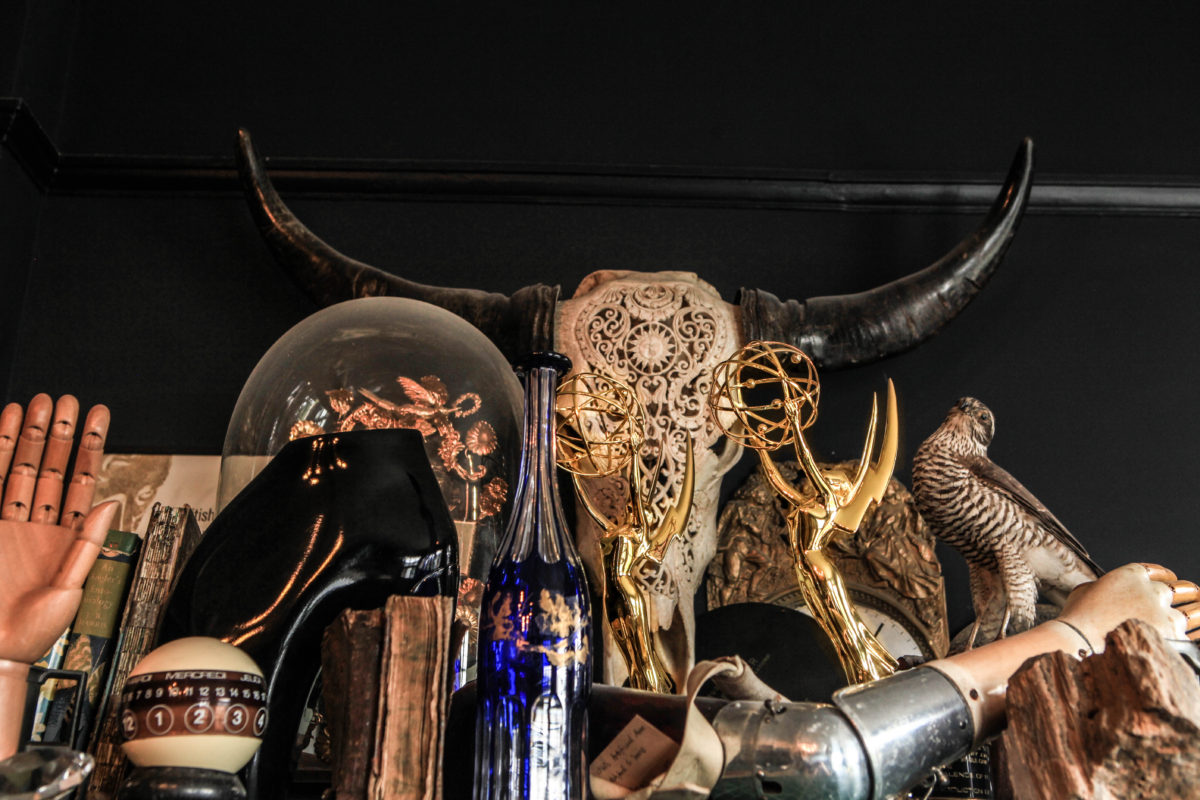
SC: Do you feel that clients and collaborators have come to expect a certain style from you?
JB: I don’t think they expect a style. How it tends to happen is that I choose to work on projects with collaborators who interest me. Consequently, I end up with something closer to what I’d want to do, as oppose to just jobbing to do set design. You tend to work with people who appreciate the kind of work you’ve done before. That’s kind of how it works. Quite often I get asked by someone, “Oh, will you do this and this?”, and it’s quite obvious that they want something that I wouldn’t find particularly interesting, and I probably wouldn’t be very good at it. So let’s say you get ten jobs, you’d take the one from someone you know, or someone you believe would offer an interesting collaborative process. I mean, we all need to earn a living, and the degree of involvement and un-involvement varies, but you tend to try and find work that excites you.
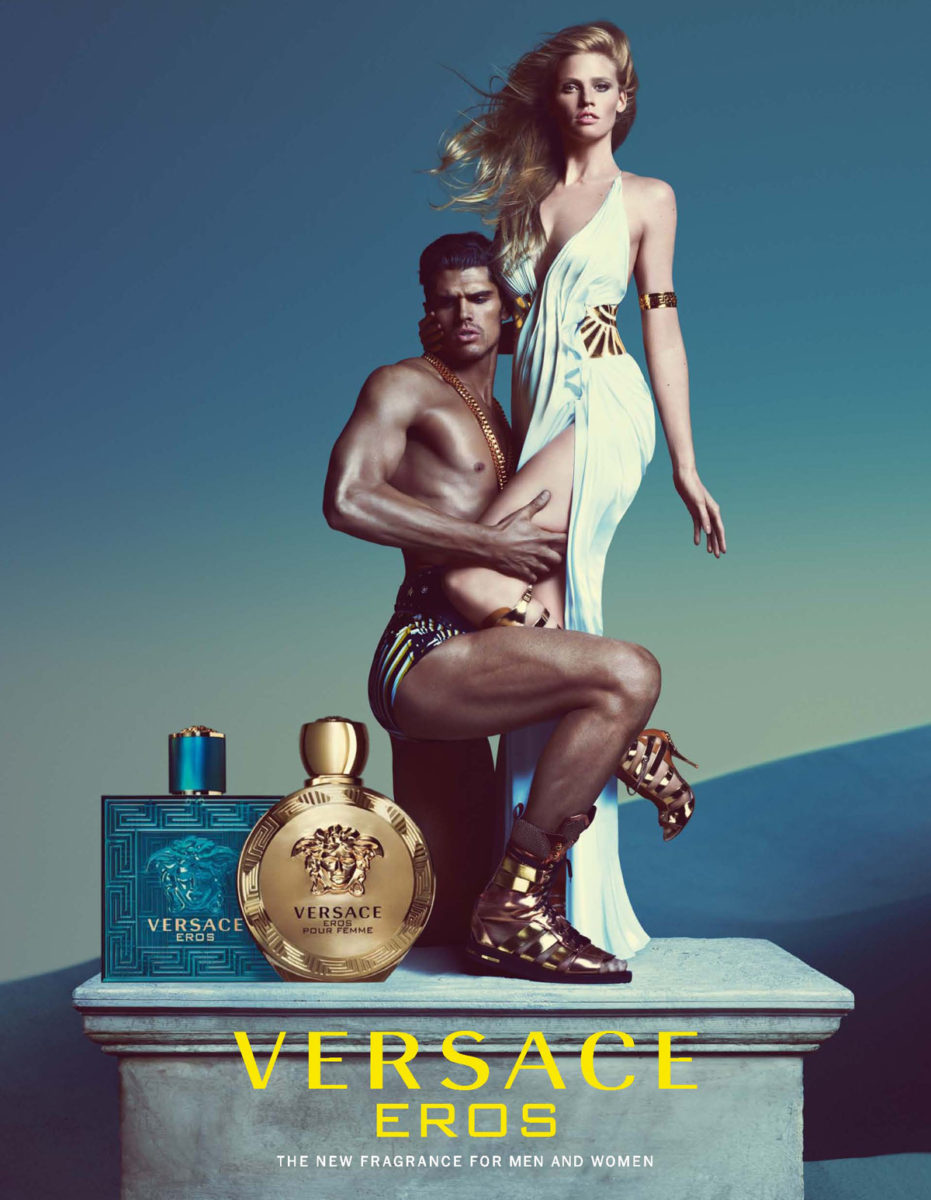
SC: What projects are you currently involved with and what do you have planned for the future?
JB: I’ve just come back from Rome, where I was doing a still shoot with Vanity Fair, with director Nicolas Winding Refn, who did Drive and he’s just done this film The Neon Demon. Him and the director of photography who he works with, Natasha Braier, who’s amazing, were really interesting to work with. The shoot was with American actresses; we’re doing a Dario Argento meets Neon Demon kind of thing. Then I’m also working on this project in Hong Kong at the moment – I’m doing a 48-hour shop opening, kind of like an immersive theatrical experience running through this high fashion store. Rick Owens is doing some work for it, and there are various other people showing things. It’s sort of slightly leading on from some projects I’ve worked on in the past for Alexander McQueen and Louis Vuitton. More set design within retail spaces, with a bit of immersive theatre thrown in.

SC: How do you feel you are unique in your approach?
JB: I don’t know whether I’m unique. I think I probably have a particular sensibility that’s been informed by quite a long background in film design, music videos, commercials, and working in all sorts of different areas. I mean, I’m always hungry and on the look out for different spatial arenas to work in. I don’t like getting bored. I do tend to do a lot of the stuff myself – I come with ideas and draw them up myself. I’ve worked on big projects and massive films where you have art departments of hundreds of people, and my role becomes more managerial. But actually, I’ve kind of reined that in a bit, and I quite like working on slightly more individual stuff, where I have more of a connection with the end result. I think that interests me more than being part of a big factory machine.
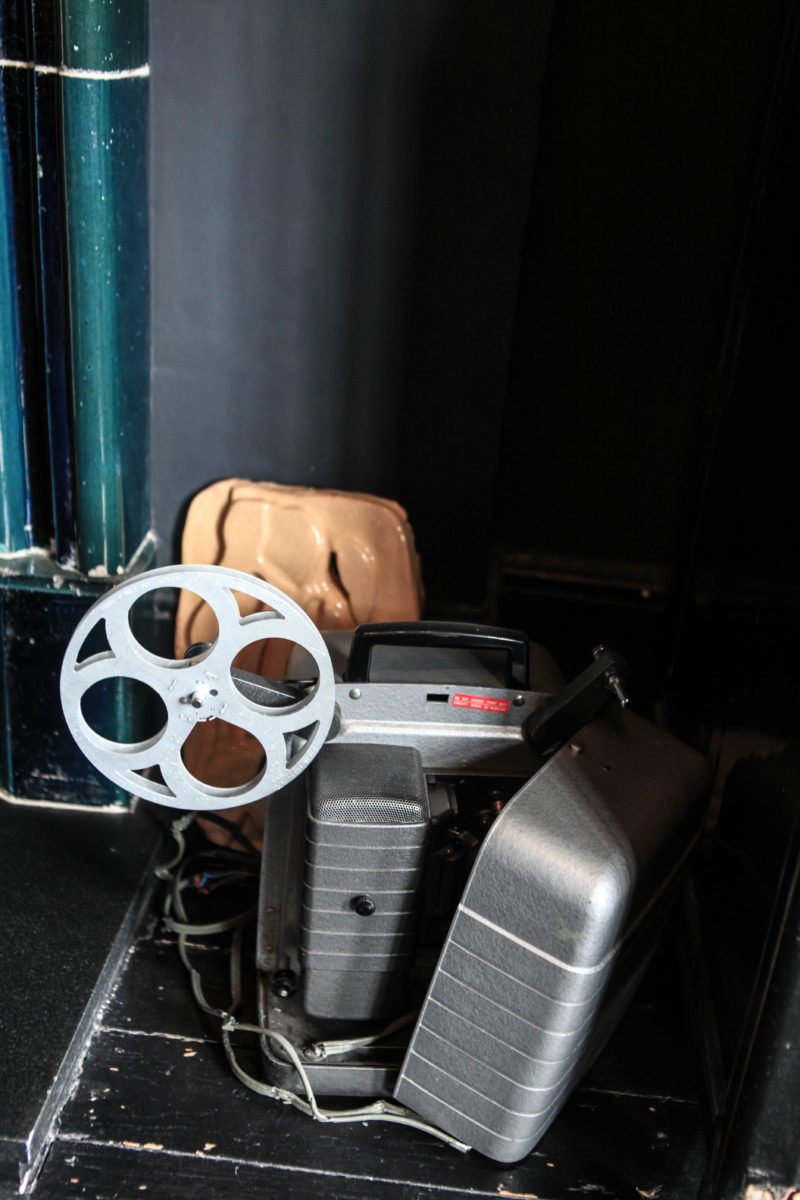
SC: Is there anyone in particular whose work you are inspired by?
JB: I’ve always been inspired by the films of Andrei Tarkovsky. I think you can find inspiration from different areas and there are concepts that one goes back to. Quite often, you go back and revisit these concepts because they’re always a fertile ground. Tarkovsky’s films are very fertile. It’s in art too – l go see a lot of exhibitions. I think you have to keep yourself interested.
SC: Could you tell us about some of your favourite or most memorable work related experiences?
JB: Obviously working with Alexander McQueen and doing the shows with him was always amazing. It was incredible because he was such an interesting and dynamic collaborator. Often what one finds is a rather corporate backstory; there are always other people around who have their own opinion on what you should be doing. He was always into pushing the art and pushing the boundaries of whatever he was trying to do, so consequently, designing sets and spaces with him was really exciting. You’d often end up in a place you didn’t expect to go.
But having said that, I’ve loved working on projects like this TV series I did in Rome, called Rome – that was an amazingly interesting experience to build a massive historical backdrop set. Then I’ve done other really weird things like the royal barge, which was a really interesting and odd experience because you’re meeting an unlikely and completely different bunch of people who are concerned with heraldic correctness and things like that. I think in my life I’ve tried to do varied and interesting work, and I’ve been lucky enough to do a fair bit.
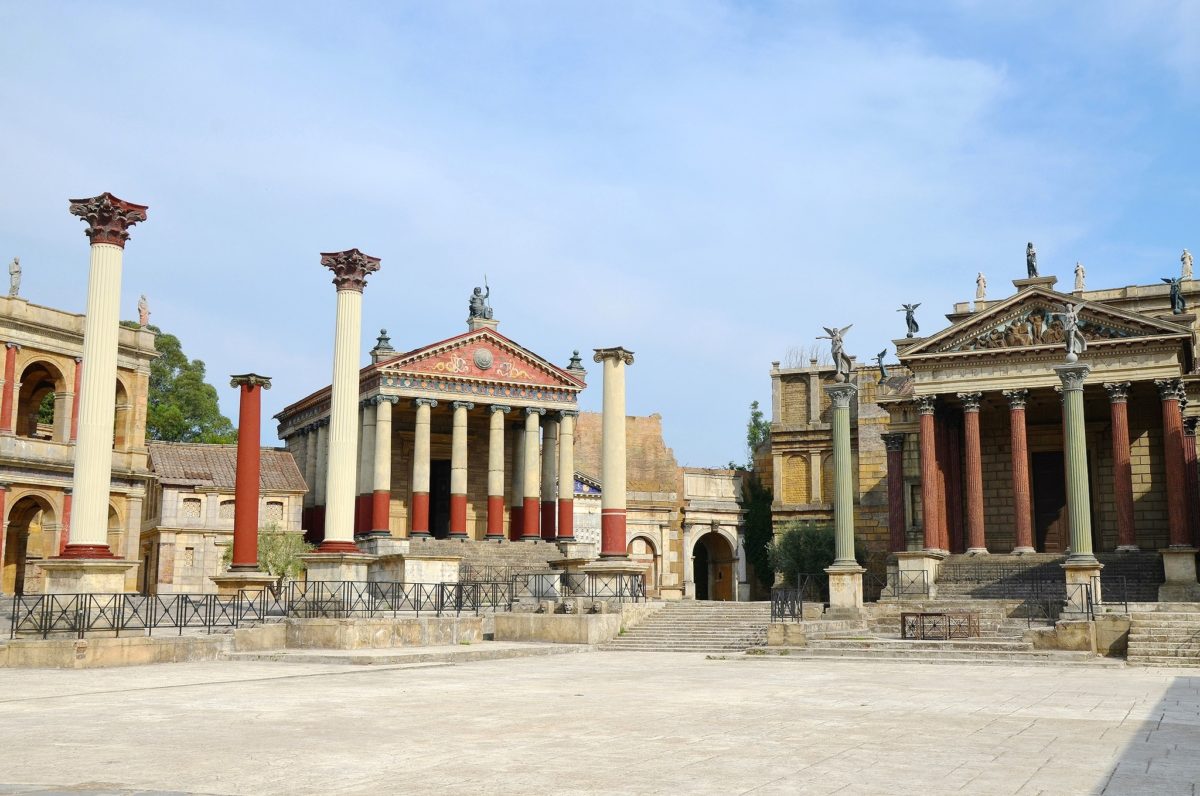
SC: You had a longstanding collaborative relationship with Alexander McQueen. Could you tell us about how the on-going partnership came about and how it was working on such incredible projects?
JB: It came about because a friend of a friend said, “Oh, he’s looking for someone to design his next set,” because he’d fallen out with the person who designed sets for him before. So I went to meet him and got along with him. The first show I did was the one with robots spraying Shalom Harlow’s dress and she’s revolving. He was very much a collaborative team player and he tended to like keeping the same team. He’d tell you if he thought it was boring. So he’d have an idea, something about witchcraft; he’d want to have a pentagram or something. And you would then come with some designs and try to reflect that, accommodating all the different areas. I mean, that’s what I like about what I do, you have to explore all these different parameters – it’s a balancing act.
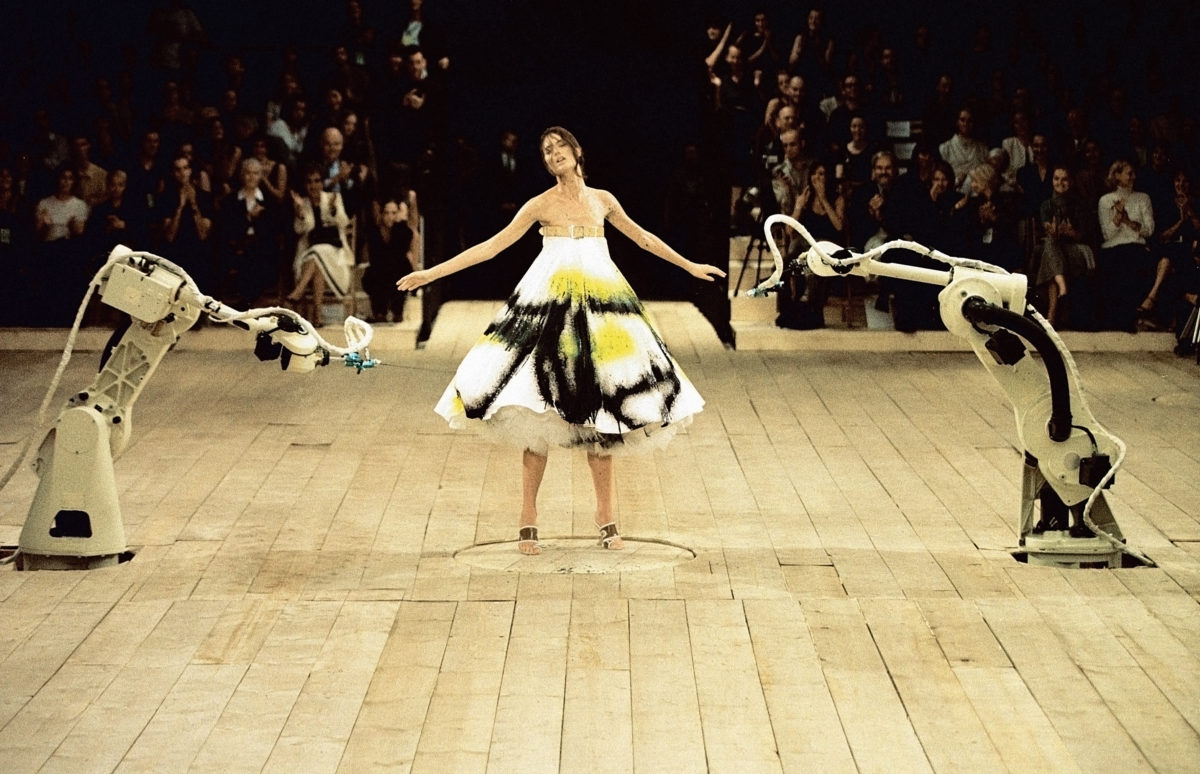
At the end of the day, you have to create something physical that is there, that people are going to see. So there are all sorts of different areas that you’ve got to consider, which I like. I like the fact that it’s real. Obviously, when you do films you can sort of get away with a lot because you can do a bit of postproduction, not always but often. Everything has its own set of parameters. But what Lee was like, he was impractical, well, he was practical in terms of making clothes, but he’d view making sets, bigger things, just like cutting a piece of fabric. So he’d be like, “Can’t you have the film go backwards and weave over this, and then go under that?” So he would challenge you spatially. That’s what was interesting. And he was very big on his narrative as well. If he didn’t feel it was the right story, he wasn’t interested in doing it. I like that – it was a little more in-depth, which is why I think the shows are so enduring. They’re not just pretty backdrops, which I think a lot of fashion shows tend to be; they’re more immersed in what he is trying to say.
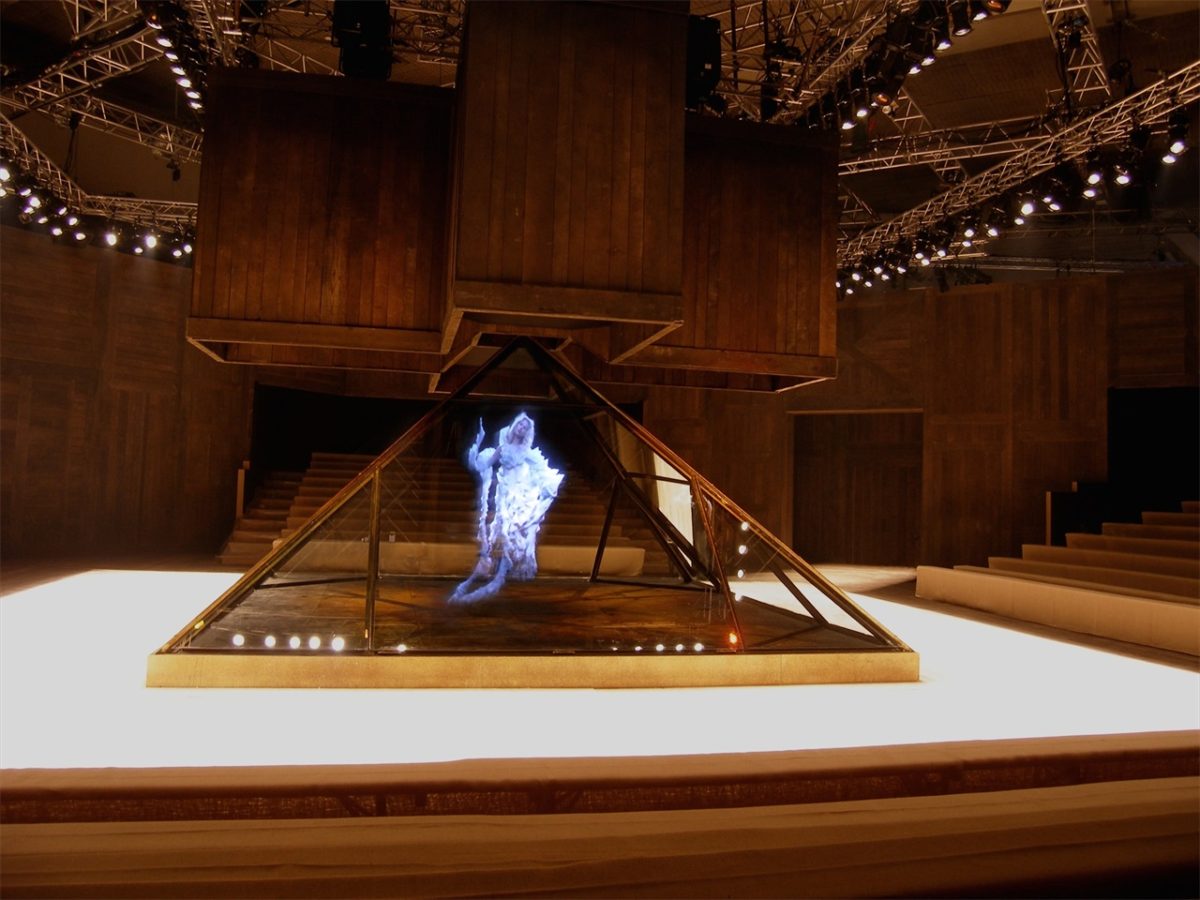
SC: How do you feel the fashion industry has changed over the past decade?
JB: I’m interested in fashion but not massively; actually, it’s not a particular passion of mine. I’m much more interested in art, film and music. I mean, what Alexander McQueen was doing was amazing; it was beyond fashion. It’s not like I’m not interested in it, it’s just I don’t know an awful lot about fashion. What I do know is that working with Lee, the way he treated fashion like art, like sculpture, was something that I loved. I’m a great fan of some fashion photographers like Nick Knight. But yes, the product of fashion, it’s not something I follow in a formal way.
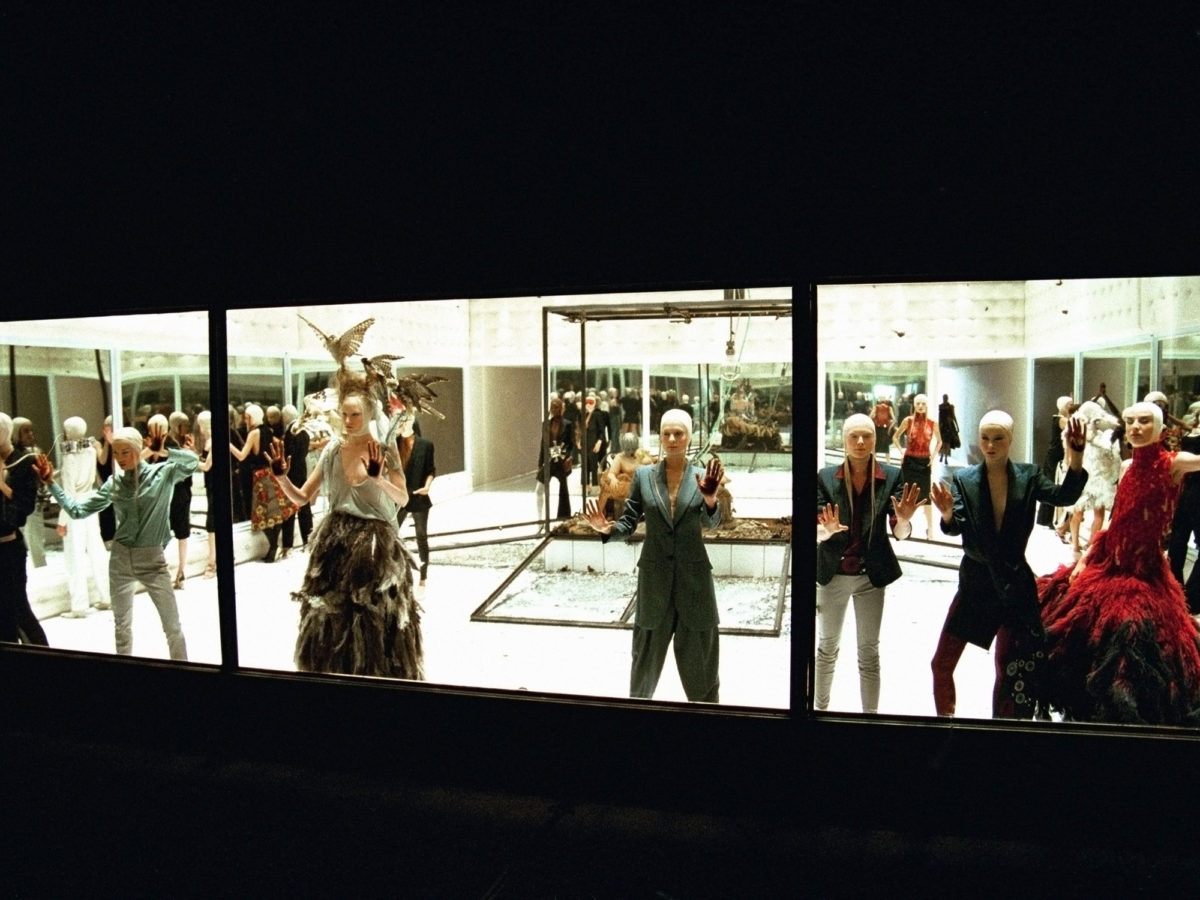
SC: Your work spans feature films, commercials, fashion shows and photography – do you find your way of working varies for each output?
JB: I would still do a massive project if necessary but I think what’s changed in film is that the scale of the productions has become such that the committee, the creative jury if you like, can be cumbersome, maybe not the right word but you understand what I’m getting at, that you sort of loose sight of the art. I tend to like films that aren’t made for financial reward. On the whole, big blockbuster movies don’t really interest me that much. It’s the story, it’s the feeling you have when you see a project, and I think the big studio system is moving further and further away from that, and smaller films have less and less resources to do things.
But having said that, I think with the advent of digital art and new technologies, media still has a lot of interesting arenas to explore. It’s certainly not done. I think the interface between art, theatre and film, those are the areas I find really fascinating. Virtual reality and just generally different ways of storytelling, not even storytelling, it’s more like 3D poetry, really interest me.
SC: Are there any photographers or filmmakers that you particularly enjoy collaborating with?
JB: I love working with Warren Du Preez and Nick Thornton Jones. It was great working with Nicolas Winding Refn last week – he’s a really interesting collaborator. Lots of different people.
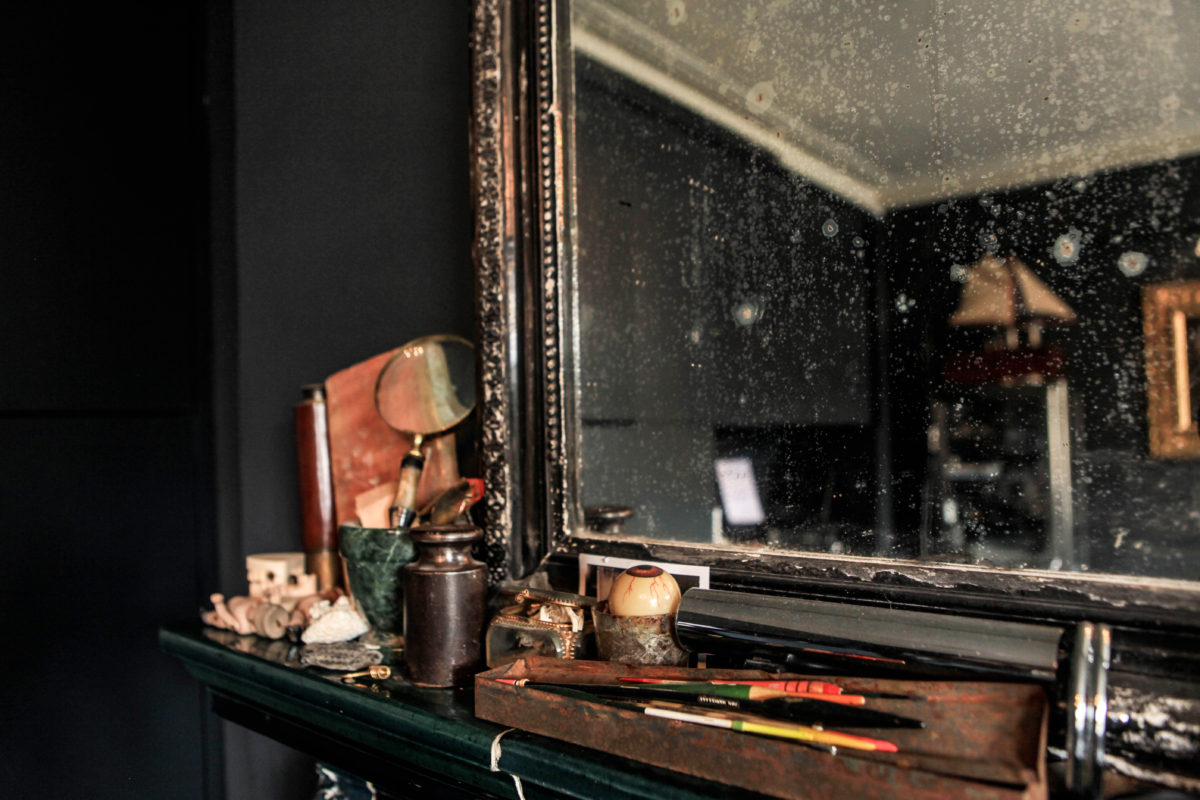
SC: Presumably your schedule must be massively varied but would it be possible to give us an idea of what your day-to-day routine might comprise of?
JB: I would probably get up and have to go for some meetings, but obviously with the nature of what I do, I can do a lot of it remotely. For example, I’ve been doing these drawings today for this project in Hong Kong, and trying to get my head around the overall vision of the thing. I went to Hong Kong a couple of weeks ago for a few days; I fly somewhere, have some meetings, understand the space and talk through the project. A lot of it is just me, but what I like about it, as oppose to working as an artist, like when I just had a studio in Old Street years ago, is that you have this collaborative way of working, and you also have deadlines, which I quite like. I realise I like working towards a date. On a day-to-day basis, there’s a certain amount of drawing, meetings and phone conversations. It’s very varied but it’s essentially the same thing. It’s about finding the right projects and managing them, and then hoping you have a holiday in the middle of all of it.
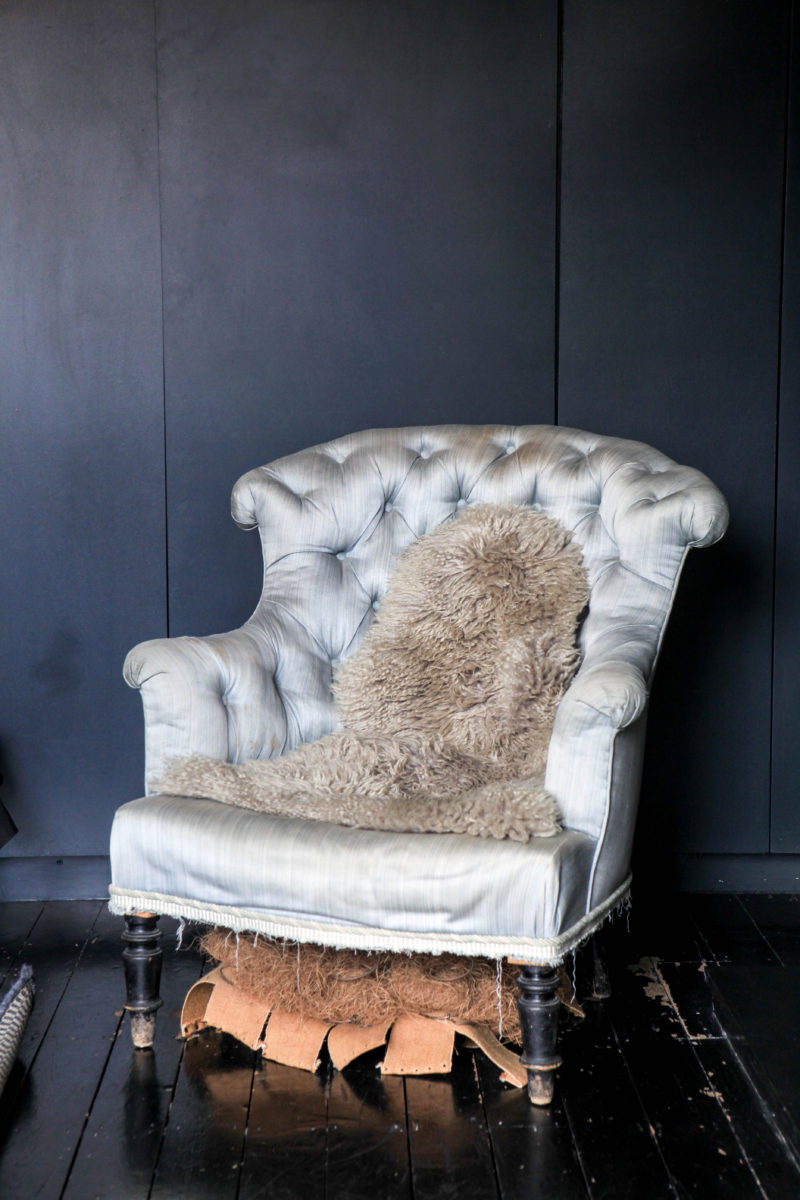
SC: Is there any creative field or type of output you would still like to explore?
JB: There are loads of ones that I can’t think of yet but I’m sure tonnes of stuff. I just find the whole area of one to one experiences, more spatially interactive experiences, interesting. I’m talking to a few people about these kinds of things at the moment – it’s happening a lot now and, globally, it’s a big change. I’ve been working with a bunch of people in Los Angeles, who’ve set up an agency for doing more of this kind of work. There are some quite interesting projects going on. They’re almost things that haven’t been thought up yet.
It varies, but things like augmented realities; like you could be walking down Piccadilly Circus and then the next minute the whole thing changes into something else, and also gaming really interests me. I think it’s an amazing period right now. Because I have quite a traditional film background, I’m interested in technology, I don’t think it solves all problems, but I like the idea that you could enter a sewer and come out the other end in this amazing experience, something you’ve never had before. You also need to find collaborators who actually have the money to do the stuff because if you want to execute something well it’s important.
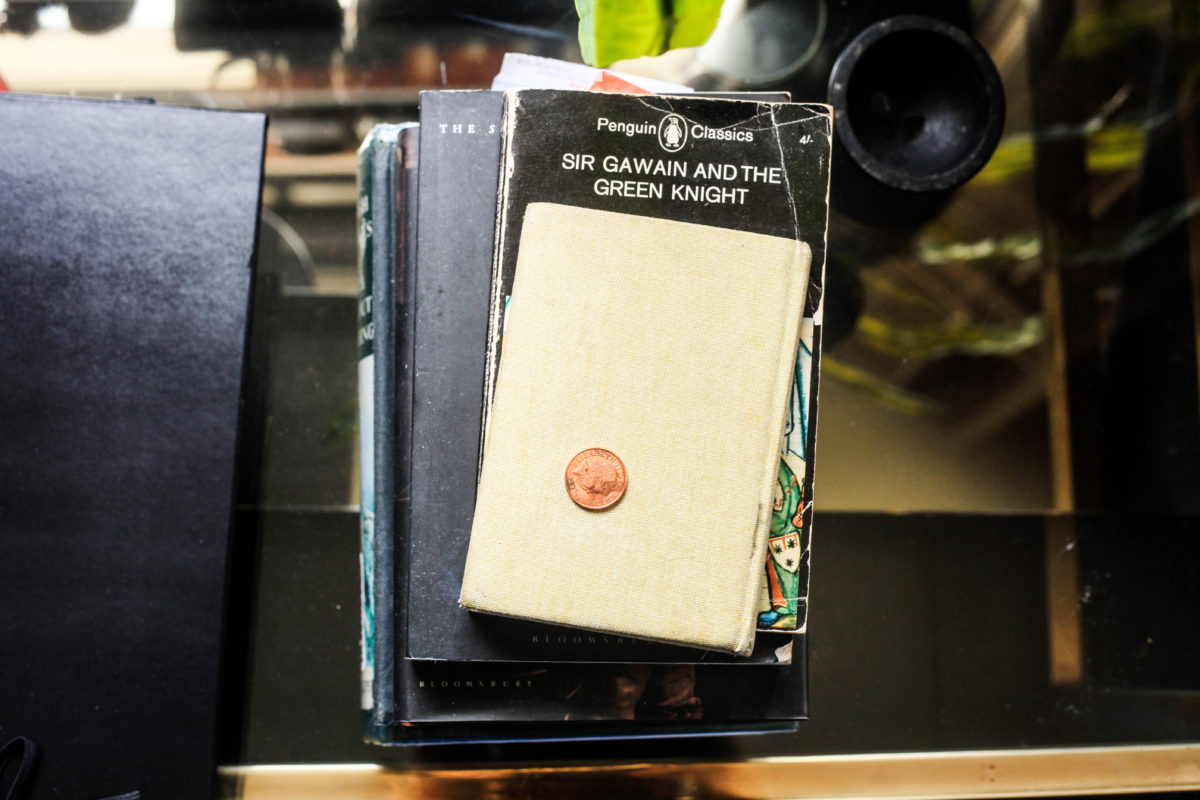
SC: What does London offer you as a production designer?
JB: London is an amazing place – it’s an amazing centre for the kind of work that we do. There are a lot of films being made here, it’s a centre for really good fashion, and it’s just a really great hub creatively. I love living in London. You know, I think it’s kind of all here. Not to say that you don’t get things when you go to Paris, Rome, or New York, of course there’s lots of interesting stuff. But London is a really good creative centre. I hope we don’t lose it with the Brexit thing. I hope we have an enlightened enough political mob who can actually see that one of the great things about Britain is its creative industries. There are so many insanely talented Brits all around the globe; Britain really punches above its weight when it comes to creative things. I just think we should be investing in art schools, investing in design – I feel really strongly that it’s the one thing we do really well.
SC: How did you get into this industry? What was your journey?
JB: I think it’s just been an extension of how I approach my life I guess. I started training to be a vet, didn’t really like it but I used to run the art class at university, so then I thought I’m going to change this. So I then went into paid work at restaurants to pay for a foundation course. Then I got into the Chelsea School of Art to do painting. I was trying to do a bit of painting, which I loved, but it’s that slightly isolating position that you’re in where you think, “What have I got to say?” I found that hard. Then a friend of mine who worked in music videos and stuff needed some help so I just started assisting him, running around, getting props, and I really liked it. I liked the collaborative nature of it. I liked the fact that next Friday you had to come up with five sculptures that were based on Anselm Kiefer.
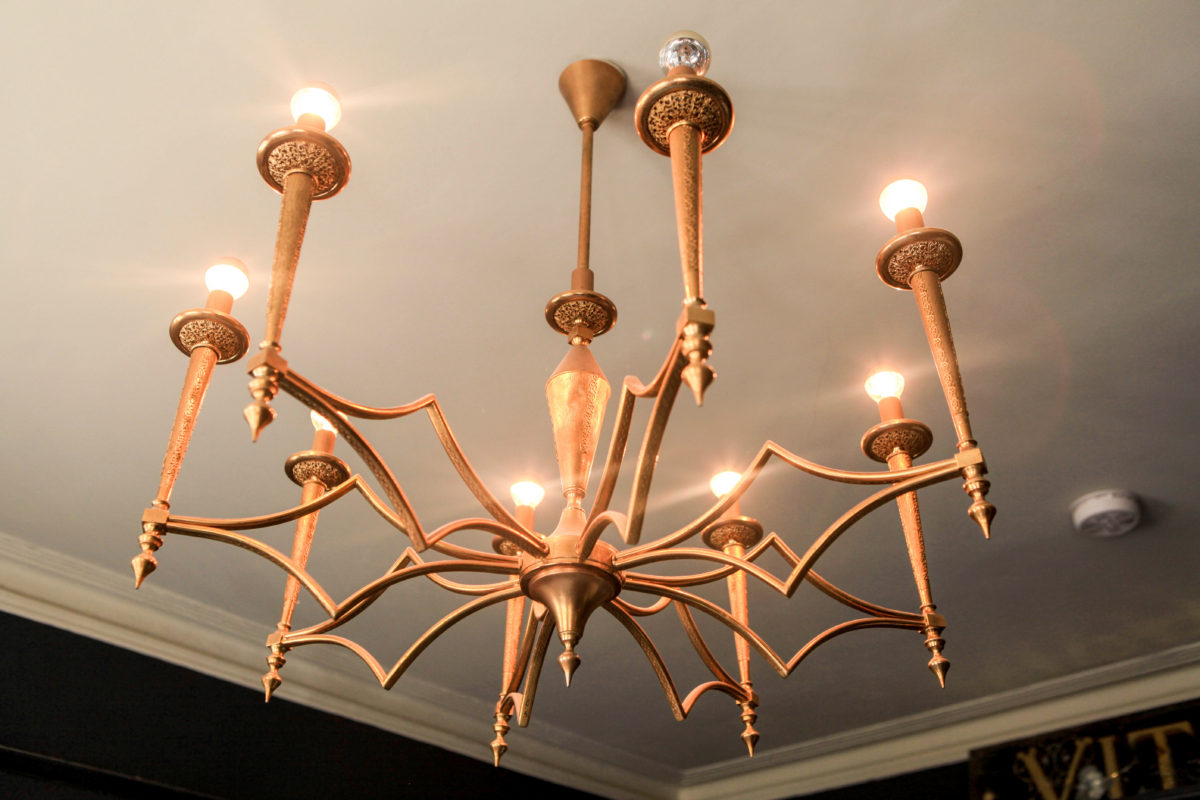
It’s just kind of fun and spontaneous, and you also actually had a few quid to buy a chainsaw and get some wood to chop up. So it was quite good. I think the preciousness about saying it’s your own work is something that is quite hard because you then feel a pressure about it, but with this, you’re just getting on with it and doing the best you can. Anyway, I really liked it, and then my friend basically went off to live in LA and was I like, “What am I going to do?” And then I decided I was going to do it myself, and I suppose that’s when it really started. I didn’t even really know film design existed, so I never studied it or anything. Like with illustration, I had to teach myself perspective and all these sorts of things. I really enjoy learning, and there’s always more to learn, which is part of what I find interesting about working with 3D and computers.
SC: What is a piece of advice you would give someone interested in entering this field?
JB: I would say don’t say “no” to anything. Keep your mind totally open and always think how you can make something more interesting. That’s what keeps things exciting for me. There are certain standardised ways of doing stuff but as soon as you start looking at something then think, “Oh yes, that’s the way to do it,” creatively, it’s game over. I mean it’s alright, I don’t think it’s wrong when people do that but certainly for me, I think that all the opportunities that I’ve had have come in the most random ways, and I tend to just say, “Yes, what’s the worst that can happen?” I hope to carry on doing more interesting things but you have to be open to it. You never know what will come out from anything that you do. There really are no rules – you can make it up.
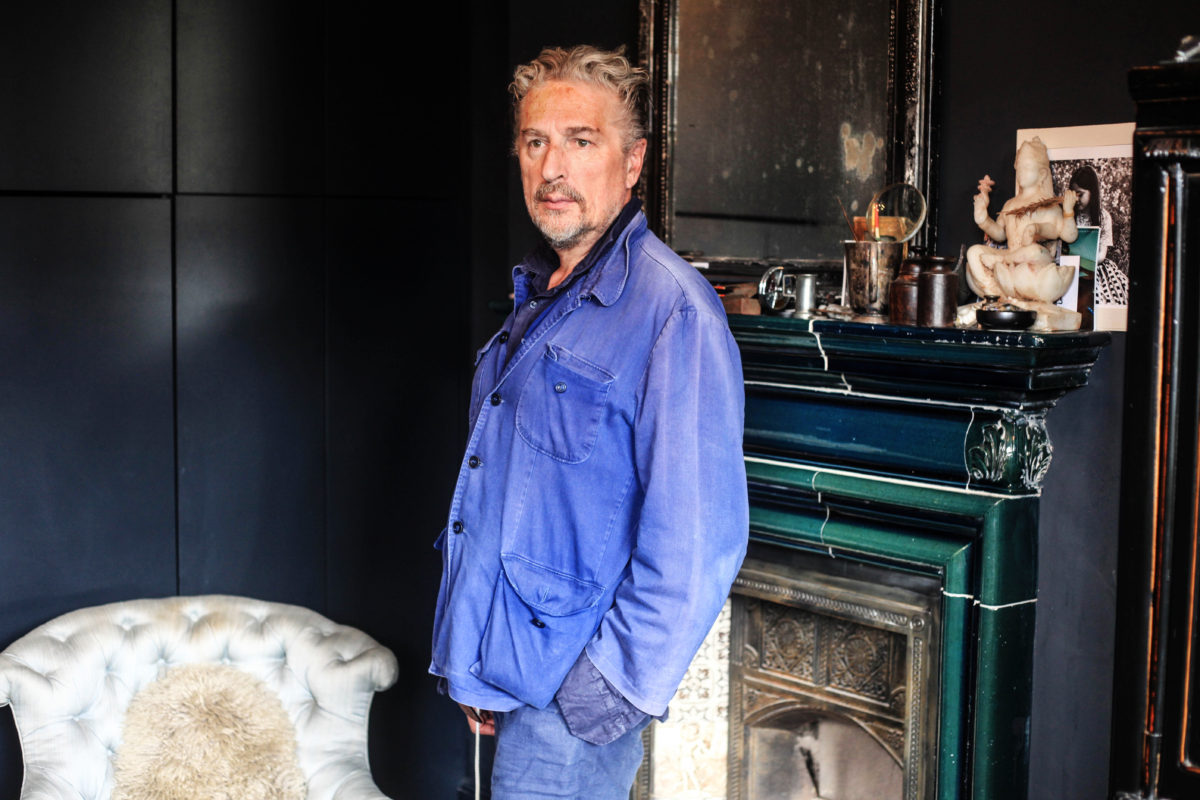
SC: What drew you to living in Kilburn?
JB: Well my wife lived in Maida Vale and I used to live in East London, in London Fields, for years. We had kids and so we moved to Queen’s Park, and then I guess we just kind of ended up here. It’s a really nice house, it’s easy to get everywhere, it’s easy to get out of town, and it’s just kind of a good place even though it’s not the funkiest area. I like being near to the Heath. I’ve lived in lots of bits of North London so I know it well.
SC: Favourite place to relax?
JB: Hampstead Heath.
SC: Favourite restaurant?
JB: I like going to the The Ledbury.
SC: Favourite holiday destination or where would you live if not London?
JB: I’d live in Rome. I just love Italy – I think it’s great. My wife’s actually Italian.
Interview by Keshav Anand | Photography by Georgia Kuhn